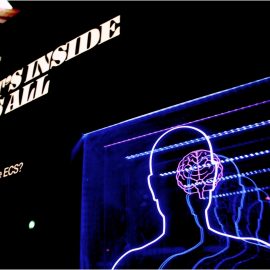

This article is an excerpt from the Shortform book guide to "The Big Leap" by Gay Hendricks. Shortform has the world's best summaries and analyses of books you should be reading.
Like this article? Sign up for a free trial here .
What’s the purpose of a mantra? What are the psychological benefits of practicing mantra meditation?
Reciting mantras is traditionally a Buddhist practice aimed at cultivating the mind’s qualities of mindfulness and concentration. More recently, mantra meditation has become a more mainstream practice recommended by positive psychologists and self-help gurus. According to Gay Hendricks, the author of The Big Leap, reciting mantras can help you reprogram your mind from life’s conditioning and limiting beliefs.
Here’s Gay Hendricks’ mantra meditation for happiness and success.
Mantra Meditation
A mantra is a word or phrase used to help train the mind to be in the present and redirect it from negative thought patterns. (Shortform note: The Chopra Institute, founded by world-renowned guru Deepak Chopra, explains that a mantra can be understood as a seed you plant in your mind, to grow an intention into a realization.)
In his book The Big Leap, Hendricks gives instructions for practicing mantra meditation for happiness and success. His mantra is: “I expand in abundance, success, and love every day, as I inspire those around me to do the same.” He calls this the Universal Success Mantra, or USM.
Repeat the mantra in sequence with your breath in meditation daily. Notice any resistance your mind has to the mantra. It’s natural—just notice it and go back to the mantra. It will take practice to retrain your mind; you’re deprogramming from a lifetime of embedded false beliefs. In addition to setting aside time to focus on your mantra in meditation, occasionally just repeat it as you go about your day any time you think of it. Hendricks also suggests that you may want to write the mantra down on pieces of paper and put them where you’ll see them throughout the day, for example in your house, car, or office, in order to prompt yourself to repeat it regularly.
| Mantras and Affirmations Are Tools for Change Meditating on a mantra is one of the core practices used for cultivating mindfulness in Buddhism, as well as being widely recommended in positive psychology. A mantra can be simply a sound used in meditation, such as “Om,” or it can be a statement, such as a positive affirmation used to focus the mind of a specific thought or idea. Scientific research has confirmed the usefulness of using positive daily affirmations. With regular practice, the use of mantras and affirmations has been shown to decrease stress, help people make changes in diet and exercise, increase self-esteem, and improve academic performance. Like Hendricks, many self-help authors stress the usefulness of mantras and positive affirmations for realizing desired outcomes. For just a few examples: Think and Grow Rich offers an affirmation for self-confidence; this involves affirming to yourself that you know you have the ability to achieve your goals and that achieving those requires self-confidence, and then stating that you have faith in yourself to succeed. The author instructs you to spend 30 minutes per day visualizing yourself as the confident person you want to be, and then 10 minutes focusing on the affirmation. The Power of Positive Thinking encourages creating a “belief mindset” by repeating “faith statements”; this involves choosing inspiring verses about faith from the Bible, memorizing those, and repeating them daily to increase the strength of your faith. The Happiness Advantage describes mental strategies for creating positive thinking patterns. In this exercise, you take five minutes every day to write down three things in your life that make you happy, and an extra 20 minutes three times a week to write about a positive experience in your life. Here, the act of writing is the mechanism that creates positive thought patterns in your mind. |

———End of Preview———
Like what you just read? Read the rest of the world's best book summary and analysis of Gay Hendricks's "The Big Leap" at Shortform .
Here's what you'll find in our full The Big Leap summary :
- How to overcome the psychological barriers to success and fulfillment
- Why most people have a self-imposed limit to happiness
- How to identify your own false beliefs and stop self-sabotaging






